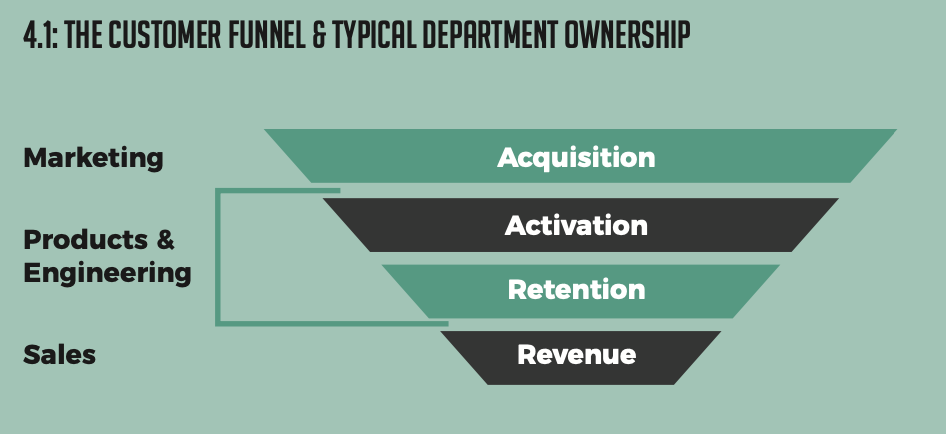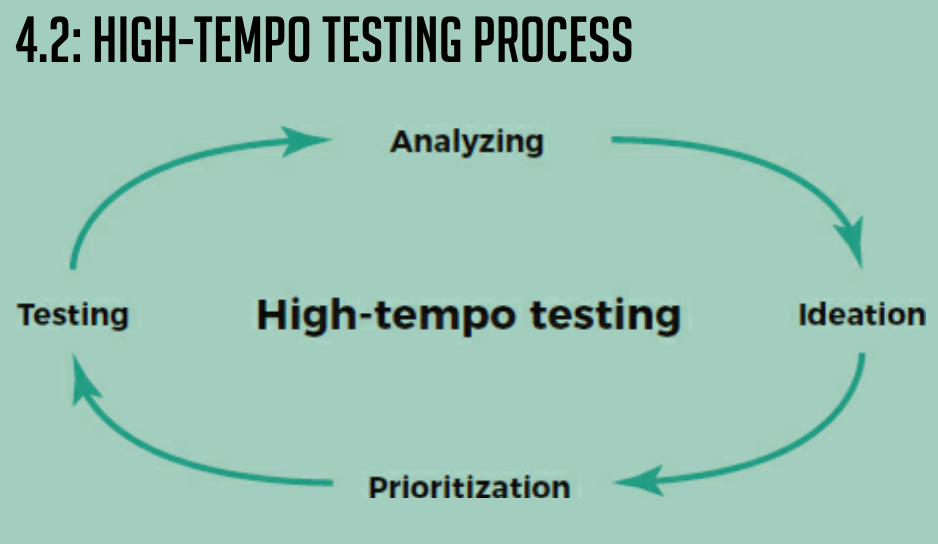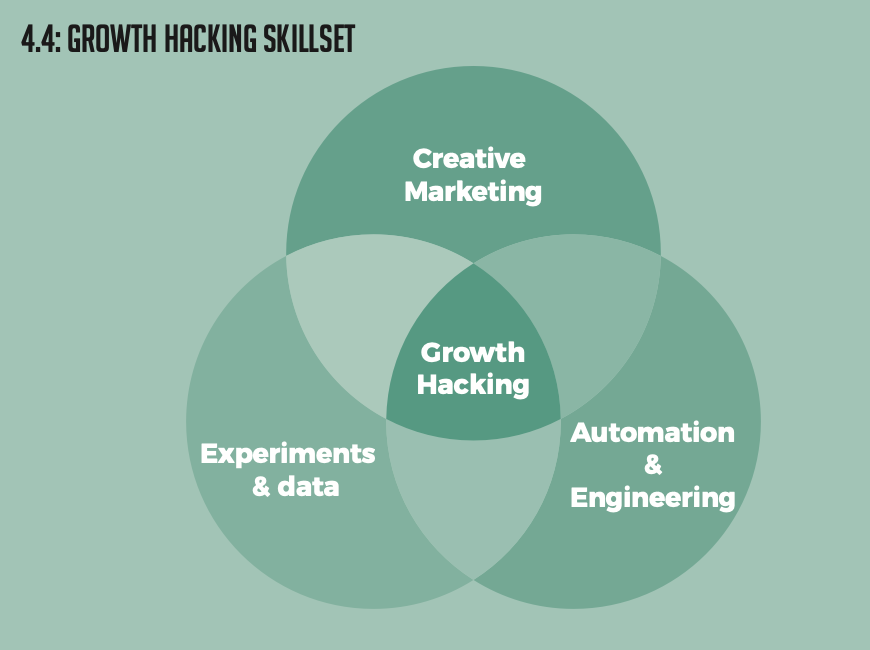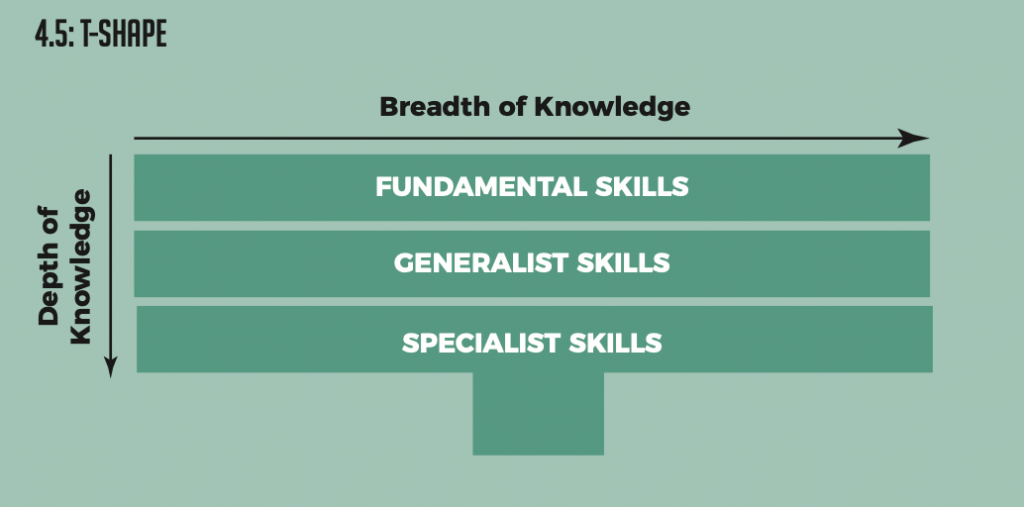
How can you make Growth Hacking work in almost any business?
As I tell people a lot, growth hacking is a “Raped Buzzword.” There’s a lot written about it, but not many have understood and captured the true essence of growth hacking or growth marketing. In the last decade, I’ve worked with hundreds of organizations to implement this way of working and I’ve seen many roads to failure and success. People are constantly debating if it should not be called growth marketing instead of hacking. But I don’t think it’s about those semantics. It’s about how you can make this philosophy work in any business.
I wrote a book about Growth Hacking after selling my Growth Hacking agency
This field is one of my main passions and in 2021 I wrote a best-selling growth hacking book: Structuring for Extreme Revenue Growth. This is what Sean Ellis the coiner of the term growth hacking said about it.
“Chris Out has done a great job with this book in helping to evolve the field of growth hacking. He shares new thinking models, actionable frameworks, and a concrete way to implement growth hacking in many types of businesses.”
Sean Ellis – Coiner of the term Growth Hacking and Author of Hacking Growth
It is possible to implement this way of working in almost every business. I’ve got an entire section on growth hacking in my book Structuring for Extreme Revenue Growth with an entire growth bonus section where I share many things data-driven marketing and growth marketing, synonyms for this way of working. You can also get the epub of my growth hacking book.
I’m building in public – writing as we go
This post will be the cornerstone content page where you can find all my thoughts on growth hacking, which are many. Therefore this page will regularly be updated until it reflects what’s in my head. And yes, it’s not perfect yet, but I really believe in the concept of building in public. And yes, my English writing is not fully perfect. But when this post is done, my Native English Editor will style it perfectly for you 🙂
Send me all your questions about growth!
When you have a question about Growth Hacking, feel free to send it to me and I will try to answer all your questions on this page. It’s a field that is ready for evolution and the best way to do this is by sharing all the lessons learned along the way.
What is Growth Hacking?
I don’t mind telling you that I’ve heard this question over a thousand times in my life. I have also answered it in hundreds of different ways, until, that is, I decided to make a distinction between the short answer and the long answer.
Short answer: High tempo experimentation across the entire customer journey to find the weakest spot in your growth system.
Long answer: read this long post 🙂
Watch out for amateur growth hackers!
Before we start, I want to highlight something important. Many people calling themselves growth hackers, don’t have a clue about what they’re doing. They don’t have the right growth hacker skills. I’ve heard countless stories of people engaging somebody like this for their startup or scale-up and it failed miserably. Growth is a challenging profession and you need to have the scar tissue to understand what you’re doing. When you’re in doubt if somebody is good enough, always feel free to contact me! I’ve hired and helped companies hire hundreds of growth professionals, so I know what to look out for.
What is the difference between growth hacking vs traditional marketing?
There are many differences between growth hacking and traditional marketing. One of them is a difference in ownership of the customer journey.

Growth Hacking is a Mindset
The most important thing to understand is that growth hacking is a mindset. Without this mindset, all the concepts lose their power. Many amateurs on this topic will tell you that it’s all about tools and smart hacks. But I believe that understanding the journey on how to get to these hacks is a skill that is way more powerful! You can only do this with this new mindset.
Execute at a very high tempo, even when it’s not perfect yet
Many people talk about the growth hacking mindset, but they aren’t living it. One of the mindsets is to execute at a very high tempo, even when it’s not perfect yet. Take this post for example. It’s far from done, but because it’s already live I can improve it every day. It’s already being indexed in a search engine.
Bust most importantly, it gives an opportunity to work on my business, even when I’ve got a couple of minutes. Because growth doesn’t happen at once, it’s a result of small steps of improvement. I’ve got two small children, and I don’t have time to sit and write for hours. But when a post is live, I can definitely write a couple of paragraphs every day. When you do this consistently, you will see that over time all the actions have compounded and will pay themself back massively.
A willingness to be uncomfortable
You will get the same results when you keep doing what you’re always doing. Something has to change if you want to grow. Therefore you are heading in an uncomfortable direction. Because if it were comfortable, you would already do it. This is the point where most people in growth get stuck. They don’t know how to handle uncomfortable growth situations.
These uncomfortable situations are the places where you can find the hidden goldmines of growth. In my book, I constantly talk about the hidden goldmine that’s in front of you. But how do you get to that gold? Would you search for that gold in places where many have been before, or are you more likely to find that gold in territories where nobody went before?
A big mistake that many growth hackers make is that don’t understand the change management component of their work. People want to change, but don’t want to be changed. But when the hidden goldmine can be found in uncomfortable places, it means you have to guide people through that change.
There’s no place for ego
When I was speaking in Germany in 2016 there was one time, when I was able to make a German audience burst out into laughter. I told them to share the book Ego is the Enemy with their boss. Why? Because I’ve seen in many circumstances that ego is a massive blocker of growth. It can be very expensive when your ego get’s in the way.
Product-Market Fit the foundation of growth hacking
Growth is only possible with a great product. Companies who build products that don’t make people extremely happy will never grow. That’s why you need to have a product that fits the market. You have strong product/market fit when 40% or more of your customers are very disappointed if they can’t use your product or service anymore. This framework was introduced by Sean Ellis to quickly figure out if a company is ready to scale.
How disappointed would you be if this product no longer existed tomorrow? a) Very disappointed b) Somewhat disappointed c) Not disappointed (it really isn’t that useful) d) N/A—I no longer use it. Interpreting the results is simple enough; if 40 percent or more of responses are “very disappointed,” then the product has achieved sufficient must-have status, which means the green light to move full speed ahead gunning for grow
Sean Ellis
When you don’t hit the 40 percent threshold, it’s important that you focus your time and effort on really understanding why that is the case. You don’t want to lose tons of money on a proposition that is not working. Are the benefits not articulated properly? Is it the wrong audience? Is there a subset that gives a higher rating? There are many different routes you can explore based on the results of this survey. Why is the survey so powerful? Because you want to know (and it identifies) those moments when you are delivering – the AHA moment. This is the moment when users really experience and see the value your product delivers.
Some examples of an AHA moment:
- Facebook: 7+ friends in 10 days
- Twitter: followed by more than 30 people
- Slack: Team sends 2,000 messages to each other
You want to understand the road to that moment and to create an onboarding flow that guides people through those points. An entirely new movement – Product-Led Growth – has evolved out of this and I will discuss it later on in this book. You need to capture the data required to get the most out of your growth experiments. It is important to have all the information in one location so that it is easily accessible for everyone in the growth team. In short, you need to have a great product and capture the kind of data that shows how users are interacting with your product.
The Growth Hacking Process
The Growth Hacking Process seems simple, but making things simple is complex for many. As I wrote earlier, it’s about high-tempo experimentation across the entire customer journey to find the weakest spot in your growth system. What does that mean in normal people’s language?
You test all kinds of versions of your marketing, sales, product, and everything else of your business, and when something works, you do more of it; when it doesn’t, you try to learn and change your approach until you find success.

But this is where it goes wrong in most companies with growth hackers. Because a growth hacker should be able to experiment across the entire journey, but in practice, this is almost never the case. A typical thing that I’ve seen a lot in practice are growth hackers that aren’t allowed to change the product, but only do the online marketing. When that’s the case you’re not a growth hacker, but an online marketeer with a fancy title!
Growth Hacker Skills
What are the growth hacker skills that you need? This is a question people ask me a lot.

You need to build a skillset where all these areas overlap.
Growth Hacker T-Shape
You need to build a Growth Hacker T-Shape.

Can you have a talent for Growth Hacking or is it a skill everybody can learn?
I’ve been “Growth Hacking” from when I was a little child. I was always looking for shortcuts on how I could achieve my goals faster with less effort and with more impact. Your brain starts to become wired to see all the possibilities. This is a challenge that I see with a lot of people coming into the field. They don’t have the mental models yet to see these opportunities. Luckily, it’s my big passion to help people see those opportunities!
North Star Metric
Where should you focus on? It’s critically important to have a singular point of focus and to organize your growth initiatives around the journey towards that point. Growth teams need to train all their focus on one point of growth. But what should that singular point of focus be? The best metrics are metrics that show a relationship between the value experienced by users and your growth initiatives. When your metric increases, it means that more users have extracted more value out of the product. Uber uses the number of riders per day as its metric. This is a very clear and simple North Star Metric.
Where do you run all these experiments?
Where do you start with your experiments? A great model is the pirate metrics from Dave Mcclure. It’s called the pirate metrics because that’s what pirates say: AARRR! These letters stand for:
- Awareness
- Acquisition
- Activation
- Retention
- Revenue
- Referral

In theory, this model is nice to visualize a customer journey, but there are some problems with it. Firstly, measuring a customer journey end-to-end is difficult when you can’t track behavior on a user level. This model comes out of the SAAS (Software-as-a-Service) industry and in that industry, it’s possible to have a measurement infrastructure to implement this model.
Growth Hacking within a Corporate environment
Many corporates have also tried to implement this way of working, but there’s one thing even harder with corporate growth hacking. It’s almost IMPOSSIBLE to influence the entire customer journey as a growth hacker or growth team. Just because it’s so big and there are so many stakeholders you need to take into account. But what is corporate growth hacking?
The bad taste of the work “Hacking”
Growth hacking is also too often thought to be all about devising clever work-arounds that break the rules of existing websites and social platforms. But despite what the well-publicized story of Airbnb’s Craigslist hack would have you believe, flouting rules is by no means required and in fact plays no part in most growth success. That was a stroke of genius, but such “backdoor” tactics are not core to the method; and most growth professionals groan at the mention of the case.”
Sean Ellis and Morgan Brown
The word ‘hacking’ has and will be one of the main differentiators, enablers, and blockers of this methodology. It’s a differentiator because this way of working is different from traditional marketing. It’s an enabler because it gives people who work in this way a vocabulary to describe what they do. But it’s also a blocker because the word has a lot of negative associations.
When you’re doing things quick and dirty or around the edges, you could identify with being a hacker. When you don’t consider these things ethical, you will never call yourself a growth hacker, even when this way of working could make a huge difference in your business.
This is something I have encountered many times. What I always try to show people is that hacking is about finding a weak spot in a system and exploiting this weakness. For years I’ve said that ‘growth hacking’ is the wrong term and that it should be called ‘growth system hacking’. You first find the system of growth and that’s what you hack. A system relates to strategy and structure. A step-by-step growth plan. That’s where you want to find the weak spot. It sounds great in theory, but in practice, it can break in lots of different ways.
Famous growth hacking examples
What are the most famous growth hack examples?
- Hotmail
- AirBnB
- Uber
What are less famous growth hacking examples?
There are a couple of less famous growth hacks that I’ve written about in my growth insights newsletter:
But remember, the best growth hacks are created by the best growth teams!
How can you build the best growth teams possible?
One of my passions in the growth hacking field is growth teams. I’ve been on a constant quest to figure out how you can build the best growth teams possible. A “Regular” Growth Team consists of the following people:
- Growth Lead or head of growth
- Developer
- Designer
- Marketing Specialist
- Analyst
The biggest mistake within growth teams that I see are a lack of accountability, no developers in the growth teams, and not a full mandate to execute. The growth hacking theory sounds great, but when you don’t structure your growth teams in the right way you will be facing many difficulties.
In my book Structuring for Extreme Revenue Growth I’ve developed the concept of next-level growth teams where you align finance within the growth teams.
Growth Hacking Books
Do you want to know which books I’ve read to learn growth hacking? In my book Structuring for Extreme Revenue Growth you can find a list of recommended books to learn growth hacking. I also have a post about the best growth hacking books.
Origin Growth Hacking Books
- Steve Blank – Four Steps to Epiphany, 2005
- Eric Ries – Lean Startup, 2011
- Sean Ellis – Lean Marketing for Startups: Agile Product Development, Business Model Design, Web Analytics, and Other Keys to Rapid Growth, 2012
- Alistair Croll & Benjamin Yoskovitz – Lean Analytics: Use Data to Build a Better Startup Faster, 2013
- Ryan Holiday – Growth Hacker Marketing: A Primer on the Future of PR, Marketing, and Advertising, 2014
- Sean Ellis & Moran Brown – Startup Growth Engines: Case Studies of How Today’s Most Successful Startups Unlock Extraordinary Growth, 2014
- Gabriel Weinberg & Justin Mares – Traction: How Any Startup Can Achieve Explosive Customer Growth, 2015
- Sean Ellis & Moran Brown – Hacking Growth, 2017
- Parul Agrawal & Rohan Chaubey – The Growth Hacking Book, 2019
- Wes Bush – Product Led Growth, 2019
- Parul Agrawal, Rohan Chaubey & Sourabh Goyal – The Growth Hacking Book 2, 2021
- Ramli John – Product-Led Onboarding, 2021
The methods described in these books overlap with two other areas: Innovation & Business Model Design and Experimentation.
Innovation & Business Model Design Books
- Alexander Osterwalder & Yves Pigneur – Business Model Generation: A Handbook for Visionaries, Game Changers, and Challengers (The Strategyzer Series), 2010
- Alex Osterwalder, Yves Pigneur, Greg Bernarda & Alan Smith – Value Proposition Design: How to Create Products and Services Customers Want (The Strategyzer Series), 2014
- Alexander Osterwalder & David J. Bland – Testing Business Ideas: A Field Guide for Rapid Experimentation (The Strategyzer Series), 2019
- Frederic Etiemble, Alan Smith, Yves Pigneur & Alexander Osterwalder – The Invincible Company: How to Constantly Reinvent Your Organization with Inspiration From the World’s Best Business Models (The Strategyzer Series), 2020
- Bob Dorf & Steve Blank – The Startup Owner’s Manual: The Step-By-Step Guide for Building a Great Company, 2020
Experimentation Books
- Stefan Thomke – Experimentation Works: The Surprising Power of Business Experiments, 2020
- Diane Tang, Ron Kohavi & Ya Xu – Trustworthy Online Controlled Experiments: A Practical Guide to A/B Testing, 2020
I strongly believe in reading a lot of books. The best growth people I know have a great passion for personal development and see that as a foundation for their growth.
What are the best growth hacking courses?
Check out my post about growth hacking courses.
You should understand First Principles
When you truly want to understand what influences growth, it’s important you understand how to think. In my search towards the best model of growth I’ve analyzed countless frameworks and deconstructed them to their first principles.

What are the biggest growth hacking myths?
There are several myths surrounding growth hacking and growth hackers. High time they were dismantled once and for all. Ellis and Brown list the following three myth busters:
- There are no silver bullets
- Growth magicians do not exist
- It’s not only about customer acquisition
Let me explain. What works for you doesn’t necessarily work for someone else. You need to keep pushing and searching for more wins to grow faster. You do this as a team. People who can perform all the skills at a high level are like unicorns. They don’t exist. The mantra of ‘let’s hire a growth hacker and sit back and relax’ is simply wrong. It doesn’t work like that. There are people who are really good
at coming up with creative ideas and others who are better at execution. There is also more to growth hacking than just acquiring new customers. It has to do with everything that is related to growing a business.
What’s the difference between Growth hacking and Extreme Revenue Growth?
As you might see, I’m a big fan of the growth hacking philosophy and methodology. But after trying to implement this way of working within hundreds of organizations, I noticed some interesting things. Firstly, people are afraid of hacking, which kills the adoption, especially in more legacy-type organizations.
Secondly, it’s not about the hacks but about setting up a structure that facilitates growth. This is a massive difference because you will hit plateaus that will break your growth when you only focus on hacks. Therefore you need to understand what to do when you’re hitting that plateau and how you can transition to the next level.
Thirdly, I believe that a company that can generate revenue is much more healthily than a company in the “pre-revenue” stage. But asking for the sale is difficult because people won’t pay when you don’t provide value; people won’t pay. So I see it as an excuse for many startups to stay pre-revenue because they can’t handle the honest feedback from the market. Therefore going after revenue growth is a tougher challenge but also more impactful.
What’s the difference between B2B and B2C Growth Hacking?
Growth Hacking works exceptionally well in B2B as B2C. I always tell people that the main difference is the number of stakeholders you need to influence and the amount of office politics you need to know. You would expect that in a B2B context, buyers are also rational, so that’s the only thing to influence, but you’re wrong thinking that. It’s a subtle play between rational and emotional buying. Growth Hacking in a B2B context is about understanding that journey and running ingenious experiments to understand what works and what doesn’t.
Are you looking for a growth hacking agency?
Many people reach out to me for help about selecting the best growth hacking agency possible. Choosing a good agency can accelerate your growth hacking transformation. I even believe that the best agencies out there is the key to accelerating your digital transformation. So feel free to contact me when you need help with agency selection.
This page will be regularly updated
Make sure to come back often to this page, as I will regularly update this page. When you want to get help with the implementation of Growth Hacking, visit my growth hacking consultant page. When you want a top-rated speaker on this subject, visit my growth hacker speaker page.
Growth Hacking FAQ – Coming Soon
What are the questions I always get about growth hacking?
Digital Transformation vs Growth Hacking
What’s the difference?
What are the traction channels?
There are 19 of them so stay tuned!
The best growth hacking tools
What are the best growth hacking tools?
How do you start with growth hacking?
How do you start?
What are the best growth hacking strategies?
How do you find the best strategy?
What’s the difference between Growth Hacking and Growth Marketing?
There’s a very interesting difference!
What are the best growth hacks and growth tactics in 2022?
I will soon share them with you!
How can you use positioning and growth hacking?
Stay tuned!
How can you quickly find growth hacking ideas?
Stay tuned!
What are the best growth hacking agencies?
Stay tuned!
What are the different growth processes?
You will soon find out!
Did you know that there are 19 channels to grow your business?
Who are the top growth hackers to follow?
Where can you get the most inspiration?
What are the top growth metrics to track?
What should you measure?
Growth Hacking vs digital marketing
What is the difference?
Do you want to find you biggest growth levers?
Get my Growth Lever Cheat Sheet!


